Australia
Welcome to Australia
Australia, the land Down Under, is a vast and captivating country that offers an extraordinary blend of natural wonders, vibrant cities, and unique wildlife. Whether you are drawn by its iconic landmarks, pristine beaches, or rich indigenous culture, Australia promises an unforgettable adventure for every traveler. From the sun-drenched coasts to the rugged Outback, this diverse country invites you to explore its many facets and create lifelong memories.
Australia is the world's sixth-largest country by land area, spanning diverse landscapes that range from tropical rainforests in the north to arid deserts in the interior and temperate regions in the south. Its major cities—Sydney, Melbourne, Brisbane, Perth, and Adelaide—are cultural hubs known for their art scenes, culinary delights, and cosmopolitan lifestyles. Beyond the cities, Australia boasts spectacular natural attractions such as the Great Barrier Reef, the world’s largest coral reef system; Uluru, the iconic red sandstone monolith in the Northern Territory; and the ancient Kakadu National Park, rich in biodiversity and Aboriginal rock art.
The country is also famed for its unique wildlife, including koalas, kangaroos, wallabies, the elusive platypus, and the Tasmanian devil, found only in Tasmania. Western Australia, the nation’s largest state, has recently gained global attention as a premier travel destination in 2025, celebrated for its pristine beaches, vast wilderness, and sustainable tourism initiatives. Perth, its capital, offers direct international flights, making it an accessible gateway for travelers worldwide.
Why Visit Australia?
1.
Unparalleled Natural Beauty and Wildlife: From swimming with humpback whales and whale sharks at Ningaloo Reef to exploring the dramatic coastal scenery of the Great Ocean Road and the Twelve Apostles, Australia’s landscapes are breathtakingly diverse. The chance to encounter unique animals in their natural habitats adds a rare dimension to any visit.
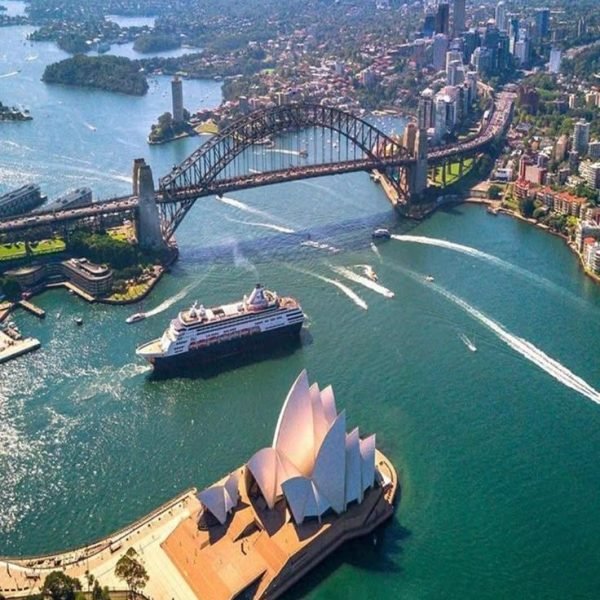
2.
Vibrant Culture and Culinary Experiences: Australia’s cities are thriving centers of culture, art, and innovation. Sydney’s harbor cruises, Melbourne’s cutting-edge galleries, and Hobart’s renowned food markets showcase the country’s dynamic urban life and culinary diversity, offering visitors a rich and immersive experience.
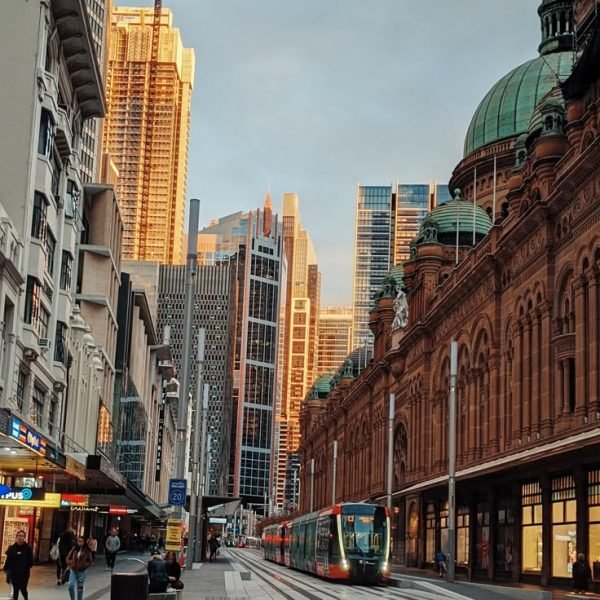
Planning Your Trip
Visa Information
Travelers to Australia must obtain a valid visa before arrival. The type of visa depends on the purpose of your visit:
- For tourism or short business trips, the Visitor Visa (Subclass 600), Electronic Travel Authority (ETA Subclass 601), or eVisitor (Subclass 651) are common options, typically allowing stays of up to three months.
- Those intending to study, work, or stay longer will need to apply for the appropriate student, skilled work, or partner visas.
- Working holiday visas are available for young adults from eligible countries, permitting travel and limited work for up to 12 months.
Applying for a visa well in advance is crucial. Ensure your passport is valid for at least six months beyond your intended departure date. Biometric data may be required depending on your visa type and nationality.
Best Time to Visit
Australia’s seasons are opposite those in the Northern Hemisphere, with summer from December to February, autumn from March to May, winter from June to August, and spring from September to November. The best time to visit depends on your interests and destinations within the country:
- Spring (September to November) is ideal for mild weather, blooming landscapes, and outdoor activities like hiking and whale watching along the east coast.
- Summer (December to February) suits beach holidays, especially in tropical Queensland and the Great Barrier Reef.
- Autumn (March to May) offers pleasant temperatures and fewer crowds in cities like Sydney and Melbourne.
- Winter (June to August) is perfect for exploring the southern alpine regions or enjoying milder weather in northern Australia.
Western Australia is appealing year-round, with coastal activities favored in summer and desert explorations more comfortable in winter.
Getting To and Around
Major international airports in Sydney, Melbourne, Brisbane, Perth, and Adelaide connect Australia to the world. Perth, in particular, has expanded direct flights to Europe and Asia, enhancing accessibility.
Within Australia, domestic flights are the fastest way to cover large distances between cities and regions. The country also offers extensive road networks ideal for self-drive adventures, especially along scenic routes like the Great Ocean Road. Public transport options include trains, buses, and ferries in urban areas, while guided tours and cruises provide excellent ways to explore natural attractions.
Travelers should plan accommodations in advance, ranging from luxury hotels and boutique lodges to budget hostels and camping grounds, depending on their itinerary and preferences.
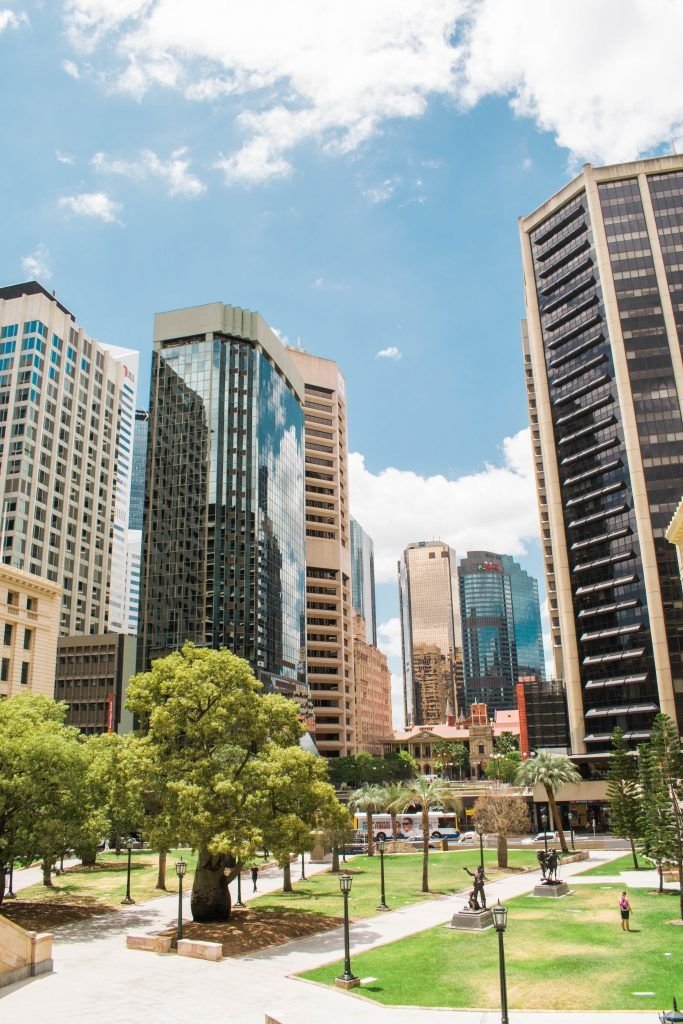
Accommodation
Australia offers an extensive range of accommodation options tailored to every type of traveler, from luxury seekers to budget adventurers. Whether you’re visiting vibrant cities like Sydney, Melbourne, or Perth, exploring the Outback, or relaxing on the coast, you’ll find a place to stay that suits your needs and style.
Accomodation Options
- Hotels and Resorts
Major cities and tourist hotspots feature world-class hotels and resorts, including international chains and boutique properties. For example, in Sydney, you can choose from luxury hotels like the Hyatt Regency or Crowne Plaza Darling Harbour, which offer premium amenities, central locations, and easy access to iconic attractions such as the Sydney Opera House and Darling Harbour. Many hotels provide special rates and packages, making them attractive for both leisure and business travelers. Perth and Melbourne also offer a wide selection of 4- and 5-star hotels with stunning views, modern facilities, and convenient city access. - Serviced Apartments and Suites
For longer stays or travelers seeking more space and flexibility, serviced apartments are popular. These often come with kitchenettes or full kitchens, laundry facilities, and living areas, ideal for families or business travelers. In Sydney’s Darling Harbour and Melbourne’s CBD, numerous apartment-style accommodations provide a home-like atmosphere with hotel comforts. - Budget and Mid-Range Options
Backpackers and budget travelers will find hostels and budget hotels in most cities and tourist areas. Sydney’s Nomads Hostel and YHA Sydney Central are examples of well-located hostels offering affordable dormitory and private rooms with social atmospheres. Mid-range hotels and motels provide comfortable, affordable stays with essential amenities and convenient locations. - Unique and Alternative Stays
Australia’s vast landscape also allows for unique accommodations such as eco-lodges, glamping sites, outback stations, and beachside cabins. These options are perfect for travelers wanting to immerse themselves in nature or experience something off the beaten path. For example, in Western Australia, luxury resorts and eco-friendly lodges near Ningaloo Reef or the Margaret River region combine comfort with stunning natural surroundings. - Student and Short-Term Accommodation
For international students or professionals staying temporarily, options include on-campus residences, shared apartments, homestays with local families, and purpose-built student accommodation. These provide a community atmosphere and are often located near universities or business districts. - Booking and Planning Tips
Accommodation prices vary by location, season, and demand. Major events and conferences can lead to high occupancy and premium rates, so early booking is recommended. Many hotels offer flexible cancellation policies, and some provide shuttle services to key venues or airports. Pet-friendly hotels are also increasingly available in cities like Sydney.
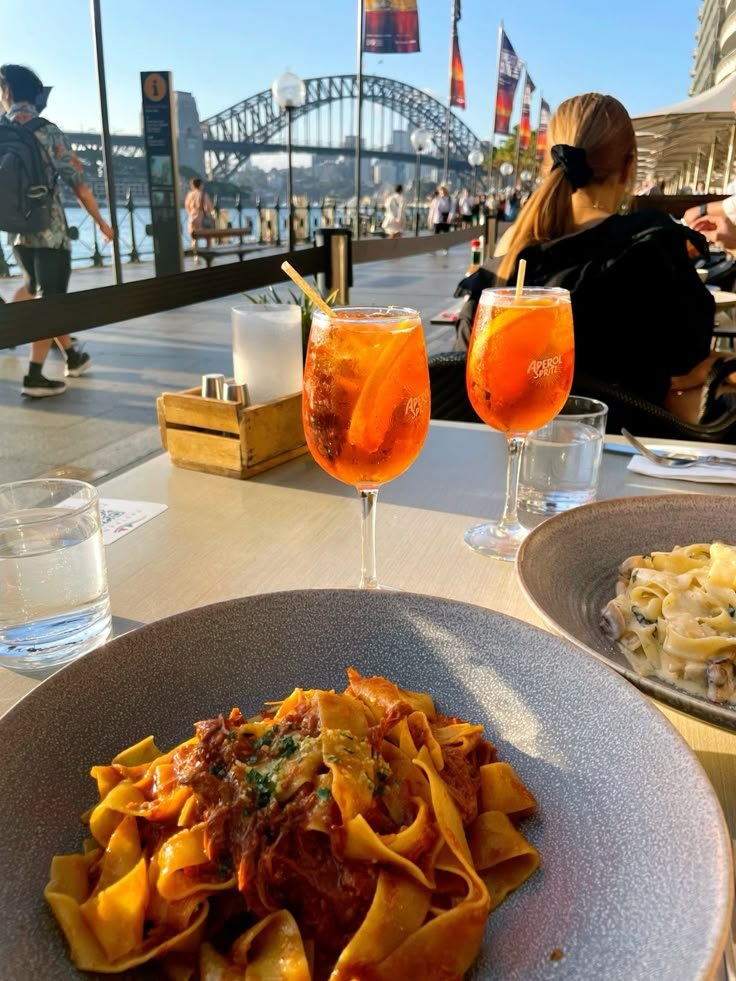
Food and Drink
Australia’s culinary scene is as diverse and dynamic as its landscapes and cultures. Influenced by its multicultural population and abundant local produce, Australian food offers a vibrant mix of flavors, from traditional indigenous ingredients to modern fusion cuisine.
- Iconic Australian Foods
No visit to Australia is complete without trying some local specialties. Popular dishes include:- Barbecue (Barbie): Australians love their barbecues, often featuring sausages (snags), lamb chops, and fresh seafood like prawns and barramundi grilled to perfection.
- Meat Pies and Sausage Rolls: Classic comfort foods found in bakeries and cafes nationwide.
- Vegemite: A salty yeast spread typically enjoyed on toast for breakfast.
- Lamingtons and Pavlova: Traditional desserts loved across the country.
- Fresh Seafood
With extensive coastlines, Australia boasts excellent seafood. Sydney and Melbourne’s waterfront restaurants serve fresh oysters, Moreton Bay bugs, and kingfish. Coastal regions like Tasmania and Western Australia are renowned for their premium seafood offerings. - Multicultural Influences
Australia’s food culture reflects its diverse immigrant communities. Asian cuisines, especially Chinese, Thai, Vietnamese, and Japanese, are widely available and highly popular. Italian and Greek influences are strong in cities like Melbourne, known for its vibrant café culture and excellent coffee. - Farm-to-Table and Local Produce
Australian chefs emphasize fresh, seasonal, and locally sourced ingredients. Farmers’ markets are common in cities and towns, offering organic fruits, vegetables, cheeses, and artisanal products. Regions like the Barossa Valley and Margaret River are famous for their wine and gourmet food experiences. - Dining Experiences
From casual beachside fish and chips to fine dining establishments with award-winning chefs, Australia caters to all tastes and budgets. Sydney’s dining scene includes waterfront seafood restaurants and trendy eateries in neighborhoods like Surry Hills. Melbourne is celebrated for its laneway cafes and innovative gastronomy. Perth and Brisbane also offer vibrant food scenes with a focus on fresh produce and multicultural flavors. - Coffee Culture
Australia takes its coffee seriously. Cities like Melbourne and Sydney are known worldwide for their specialty coffee culture, with countless independent cafés serving expertly brewed espresso, flat whites, and cold brews. - Wine and Craft Beer
Australia’s wine regions produce world-class wines, including Shiraz from Barossa Valley, Cabernet Sauvignon from Coonawarra, and Chardonnay from Yarra Valley. Many wineries offer tastings and cellar door experiences. Craft beer has also surged in popularity, with microbreweries and brewpubs found in most cities and regional towns. - Tips for Food Travelers
Exploring local markets, food festivals, and indigenous food tours can enrich your culinary journey. Australians are generally casual and friendly, so don’t hesitate to ask locals for restaurant recommendations or hidden gems.
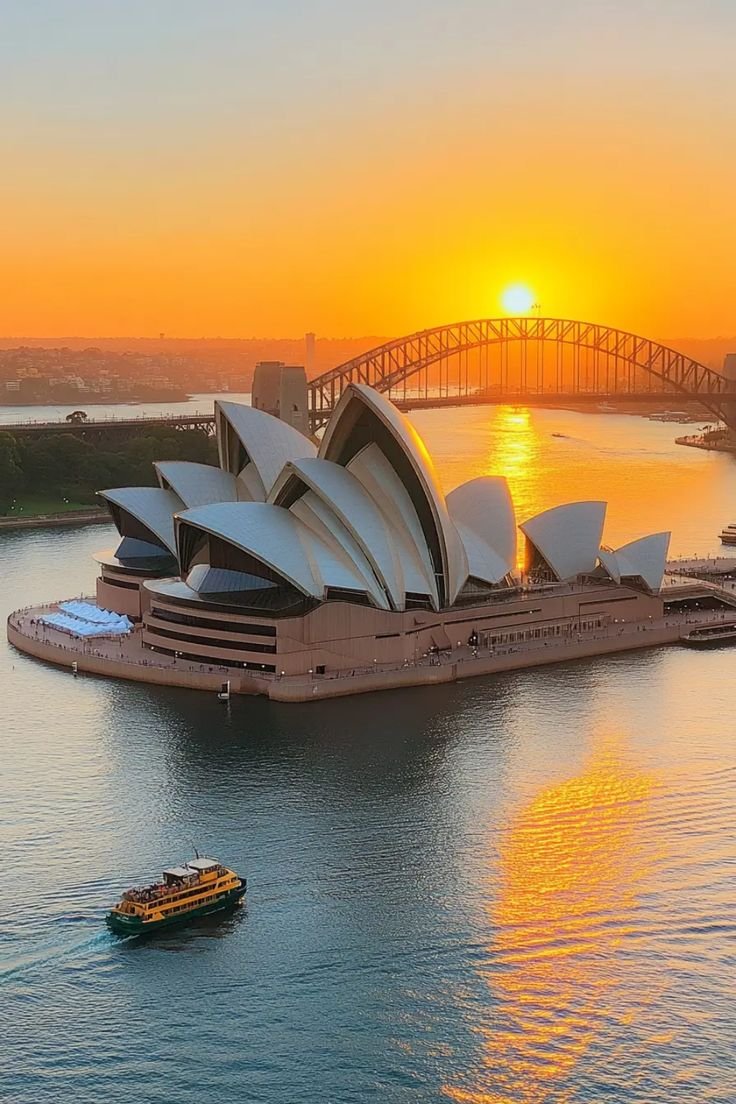
Must-See Attractions
Sydney Opera House and Sydney Harbour Bridge
No visit to Australia is complete without experiencing the architectural marvel of the Sydney Opera House. Nestled on Bennelong Point, this UNESCO World Heritage site is famous for its distinctive sail-like design and hosts world-class performances year-round. Nearby, the Sydney Harbour Bridge offers panoramic views of the city and harbor, with options to walk across or even climb the bridge for an adrenaline rush and spectacular photo opportunities. The surrounding Circular Quay and The Rocks district provide lively dining, shopping, and cultural experiences.
Great Barrier Reef
Stretching over 2,300 kilometers along Queensland’s coast, the Great Barrier Reef is the world’s largest coral reef system and a UNESCO World Heritage site. It is renowned for its breathtaking underwater biodiversity, including vibrant coral formations, sea turtles, dolphins, and tropical fish. Visitors can snorkel, dive, or take scenic flights to witness this natural wonder. The nearby town of Cairns serves as the main gateway to the reef, offering tours and marine experiences.
Uluru (Ayers Rock)
Located in the heart of the Northern Territory’s Red Centre, Uluru is a massive sandstone monolith that holds profound cultural and spiritual significance for the local Anangu Aboriginal people. Its striking red hues shift dramatically at sunrise and sunset, creating a mesmerizing spectacle. Visitors can explore the base walk to discover ancient rock art and waterholes, but climbing Uluru is discouraged out of respect for its cultural importance. The nearby Kata Tjuta (The Olgas) rock formations also offer stunning hiking opportunities.
Melbourne and the Great Ocean Road
Melbourne is Australia’s cultural capital, known for its vibrant arts scene, eclectic neighborhoods, and world-class coffee culture. Just a few hours’ drive from the city, the Great Ocean Road offers one of the world’s most scenic coastal drives, featuring the iconic Twelve Apostles limestone stacks, lush rainforests, and charming seaside towns. This route is perfect for road-trippers seeking dramatic ocean views and natural beauty.
Kakadu National Park
One of the largest and most ecologically diverse national parks in the world, Kakadu in the Northern Territory is a treasure trove of wildlife, wetlands, sandstone escarpments, and Aboriginal rock art. Visitors can explore walking trails, take boat cruises to spot saltwater crocodiles, and learn about indigenous culture through guided tours. Its rich biodiversity and cultural heritage make it a must-see for nature and history enthusiasts.
Western Australia Highlights: Ningaloo Reef and Margaret River
Western Australia is gaining attention as a top travel destination in 2025. Ningaloo Reef offers a more intimate and less crowded coral reef experience than the Great Barrier Reef, famous for swimming alongside gentle whale sharks and manta rays. The nearby town of Exmouth is a great base for marine adventures. Margaret River is renowned for its premium wineries, gourmet food, and stunning coastal scenery, perfect for wine lovers and nature seekers.
Blue Mountains and the Three Sisters
Just a short trip from Sydney, the Blue Mountains National Park features dramatic cliffs, eucalyptus forests, waterfalls, and the famous Three Sisters rock formation. Hiking, scenic railway rides, and lookout points provide ample opportunities to soak in the breathtaking landscape and spot native wildlife.
Tasmania: Launceston and Cradle Mountain
Tasmania offers pristine wilderness and charming towns. Launceston and the Tamar Valley are celebrated for their cool-climate wines, fresh seafood, and rich history. Cradle Mountain-Lake St Clair National Park invites hikers to conquer rugged peaks and enjoy panoramic views. Cataract Gorge near Launceston is a natural wonderland with walking trails and scenic cruises.
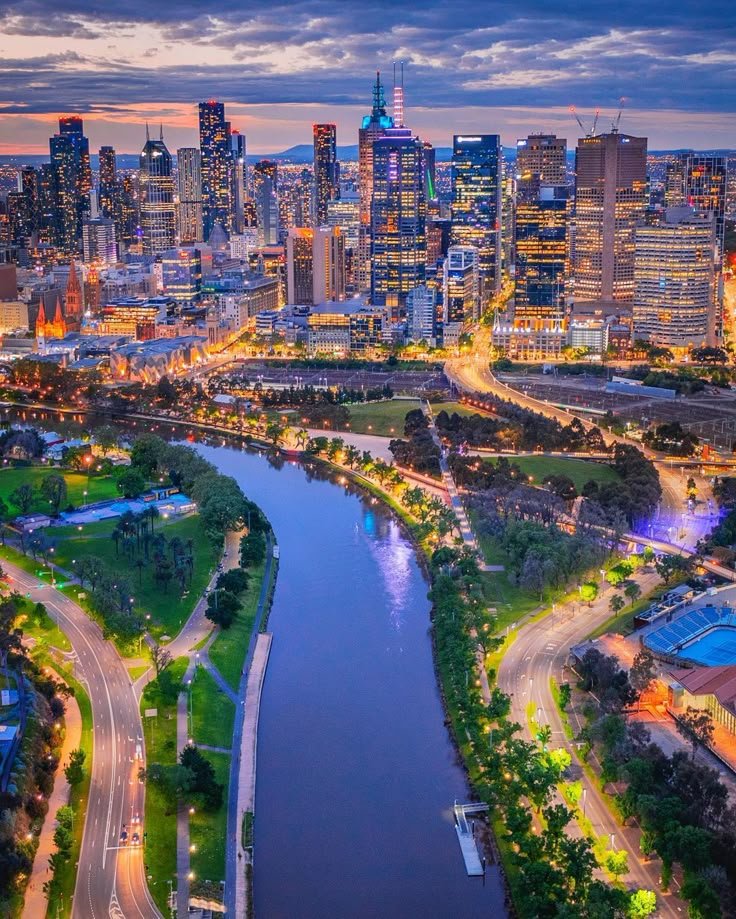
Must-Do Activities
Snorkeling and Diving at the Great Barrier Reef and Ningaloo Reef
Immersing yourself in Australia’s underwater world is a highlight for many visitors. Snorkeling or diving among vibrant coral gardens, colorful fish, turtles, and even whale sharks at Ningaloo Reef offers an unforgettable experience. Guided tours provide equipment, safety briefings, and expert knowledge to enhance your adventure.
Whale Watching
Australia’s coastal waters are prime locations for whale watching, especially during migration seasons. The eastern coast near Sydney, Hervey Bay, and Byron Bay offers excellent opportunities to spot humpback whales breaching and playing. Western Australia’s Ningaloo Reef is also famous for encounters with whale sharks, the largest fish in the ocean.
Explore Aboriginal Culture and Heritage
Engage with Australia’s rich indigenous heritage through cultural tours and experiences. At Uluru, guided walks led by Anangu guides share stories of the land, Dreamtime legends, and traditional practices. In Kakadu and other regions, visitors can view ancient rock art and participate in workshops to learn about Aboriginal art, music, and bush foods.
Road Tripping the Great Ocean Road
Driving the Great Ocean Road is a quintessential Australian experience. Stop at coastal towns, beaches, and lookouts to admire the Twelve Apostles and other natural rock formations. Enjoy surfing, hiking, and sampling local seafood along the way. The route is also dotted with rainforests and wildlife reserves, perfect for nature lovers.
Hiking and Outdoor Adventures
Australia’s diverse landscapes offer countless hiking opportunities. From the Blue Mountains’ scenic trails to Tasmania’s Cradle Mountain and the rugged Kimberley region in Western Australia, you can enjoy walks ranging from easy strolls to challenging treks. Many trails lead to stunning vistas, waterfalls, and unique flora and fauna.
City Experiences: Food, Art, and Nightlife
Explore Australia’s vibrant urban centers. Melbourne is famous for its laneway cafes, street art, and live music scene. Sydney offers harbor cruises, world-class dining, and iconic beaches like Bondi. Perth and Brisbane feature thriving cultural scenes and outdoor markets. Don’t miss food festivals, art galleries, and local craft breweries.
Wildlife Encounters
Australia’s unique wildlife is a major draw. Visit wildlife sanctuaries and zoos such as Taronga Zoo in Sydney, Currumbin Wildlife Sanctuary on the Gold Coast, or the Healesville Sanctuary near Melbourne to see koalas, kangaroos, wombats, and platypuses up close. For a more natural experience, explore Kangaroo Island or take guided tours in national parks to spot animals in the wild.
Adventure and Theme Parks
For thrill-seekers and families, Australia offers several theme parks and adventure activities. Warner Bros. Movie World and Sea World on the Gold Coast provide rides, shows, and entertainment. Outdoor adventures include surfing lessons, skydiving, hot air ballooning, and four-wheel-drive tours in the Outback or along coastal dunes.
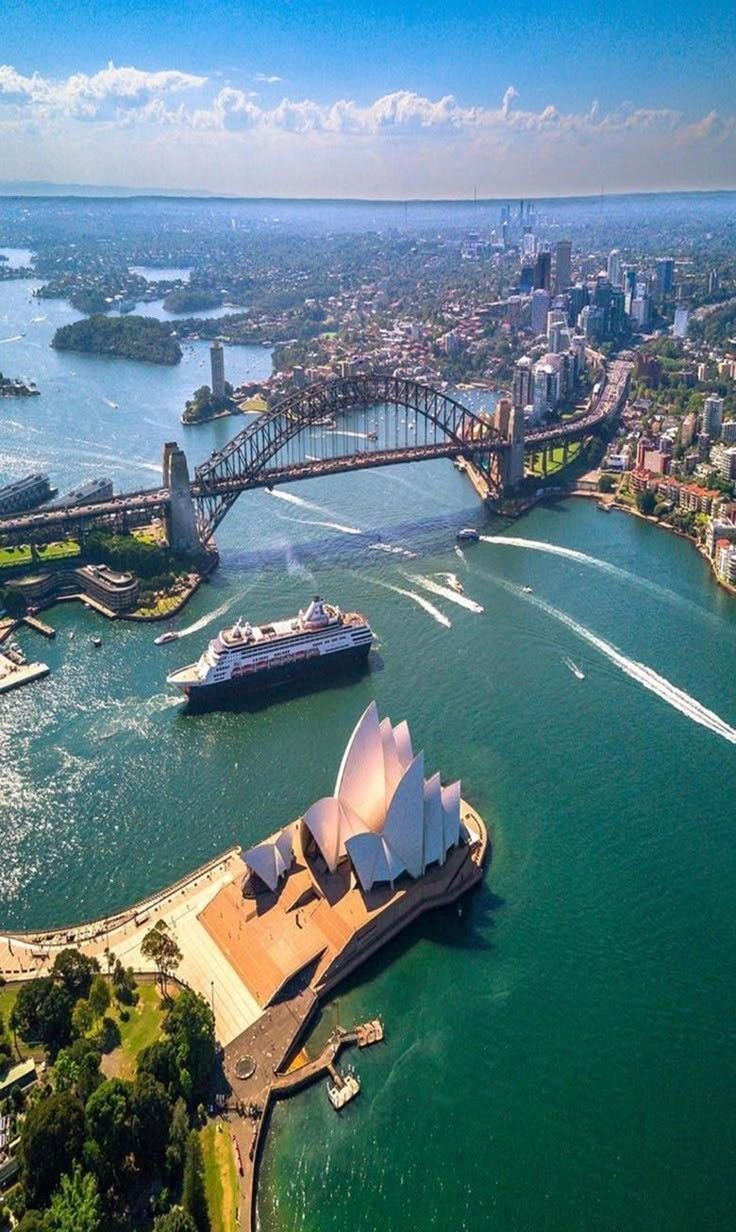
Travel Tips
Traveling to Australia in 2025 promises an exciting and enriching experience, but like any international trip, being well-prepared is key to ensuring your journey is safe, smooth, and enjoyable. This guide offers essential travel tips covering safety advice, local customs, and language basics to help you navigate Australia with confidence and respect.
Safety Advice
General Safety
Australia is considered one of the safest countries in the world for travelers. Violent crime is low, and most visits are trouble-free. However, petty crime such as pickpocketing and bag snatching can occur, especially in busy urban areas and tourist hotspots. To stay safe:
- Keep your belongings secure, especially in crowded places, public transport, and hostels.
- Use luggage locks and store valuables in hotel safes when possible.
- Avoid leaving personal items unattended, even on beaches or in cafes.
- Exercise common sense by staying aware of your surroundings and avoiding poorly lit or isolated areas at night.
Road Safety
If you plan to rent a car or campervan, remember that Australians drive on the left side of the road. This can be challenging if you’re used to driving on the right, so take extra care, especially when turning or at roundabouts. Important road safety tips include:
- Always obey speed limits and traffic signs.
- Be cautious driving at dawn or dusk when wildlife such as kangaroos and wallabies are most active and may cross roads unexpectedly.
- Avoid driving long distances alone in remote areas; inform someone of your itinerary.
- Carry emergency supplies including water, food, a first-aid kit, spare tires, and a satellite phone or emergency beacon if traveling in the Outback or isolated regions.
- Plan fuel stops carefully, as some stretches between towns can be very long.
Ocean and Water Safety
Australia’s beaches are world-famous, but ocean conditions can be hazardous if you are unprepared. To stay safe:
- Swim only at patrolled beaches and always between the red and yellow flags where lifeguards are on duty.
- Be aware of riptides, which are strong currents that can pull swimmers out to sea.
- Follow all posted signs and lifeguard instructions.
- Avoid swimming alone or in rough conditions.
- In northern Queensland and other tropical areas, be mindful of jellyfish season (November to May). Wearing stinger suits or swimming in designated safe zones is advised during this period.
- Be cautious of marine wildlife such as sharks and crocodiles; heed local warnings and avoid swimming in unsafe areas.
Wildlife and Insect Safety
Australia is home to unique wildlife, some of which can be dangerous if approached. To protect yourself and the animals:
- Admire wildlife from a distance; do not attempt to touch or feed wild animals.
- Learn about local dangerous animals such as snakes, spiders, crocodiles, and jellyfish, and follow safety advice.
- If you encounter a dangerous animal or insect, calmly leave the area.
- Use insect repellent to protect against mosquitoes and other biting insects, especially in tropical and rural areas.
Sun Safety and Health
Australia’s sun is intense, and sunburn or heatstroke are common risks:
- Always wear a broad-brimmed hat, UV-protective sunglasses, and sunscreen with SPF 50 or higher.
- Drink plenty of water to stay hydrated, especially when outdoors or in hot weather.
- Avoid prolonged exposure to the sun during peak hours (10 a.m. to 4 p.m.).
- Rest in the shade regularly during outdoor activities.
- Carry a basic first-aid kit and any personal medications you may need.
Emergency Contacts
In case of emergency, dial 000 for police, fire, or ambulance services anywhere in Australia. It’s advisable to have travel insurance that covers medical emergencies and evacuation.
Local Customs
Friendly and Informal Culture
Australians are known for their laid-back, friendly, and informal approach. When interacting with locals:
- Use first names quickly; formal titles are rarely used.
- Greet people with a simple “Hello” or “G’day” (a common Aussie greeting).
- Australians appreciate politeness but are generally casual and straightforward.
- Respect personal space and avoid overly aggressive behavior.
Tipping
Tipping is not mandatory in Australia and is generally less common than in some other countries. However, it is appreciated for exceptional service in restaurants, bars, or for tour guides. A tip of around 10% is sufficient if you feel the service warrants it.
Indigenous Culture Respect
Australia has a rich Indigenous heritage that dates back tens of thousands of years. When visiting Aboriginal sites or communities:
- Follow all guidelines and respect cultural protocols.
- Do not climb or touch sacred sites such as Uluru unless explicitly permitted.
- Participate in cultural tours or experiences with local Indigenous guides to gain deeper understanding and show respect.
- Avoid taking photographs in restricted areas.
Environmental Awareness
Australians value their natural environment highly. As a visitor:
- Dispose of waste responsibly and recycle where possible.
- Avoid disturbing wildlife or removing plants and rocks from natural areas.
- Use water and energy sparingly, especially in drought-prone regions.
- Follow park rules and stick to marked trails when hiking.
Language Basics
English Language
English is the official language of Australia, spoken by the vast majority of the population. The Australian accent is distinctive and may take some getting used to, but most Australians speak clearly and are happy to help if you ask them to repeat or explain.
Common Australian Phrases and Slang
Learning a few local phrases can enhance your experience and help you connect with locals:
- G’day – Hello
- Mate – Friend or buddy; used commonly in conversation
- No worries – It’s okay / You’re welcome / No problem
- Cheers – Thanks or goodbye
- Arvo – Afternoon
- Barbie – Barbecue
- Brekkie – Breakfast
- Thongs – Flip-flops/sandals
- Servo – Gas station
- Bogan – A colloquial term for someone who is unsophisticated (use cautiously)
Communication Tips
- Australians tend to be direct but polite.
- Humor and sarcasm are common in conversation.
- If you’re unsure about something, simply ask for clarification.
- Australians appreciate friendliness and openness, so don’t hesitate to strike up a conversation.
Final Tips for a Smooth Journey
Australia in 2025 is a welcoming and safe destination, but travelers should prepare by understanding local safety considerations, customs, and language nuances. Respect for the environment and Indigenous culture, combined with practical safety measures—especially regarding road, ocean, and sun safety—will ensure your trip is enjoyable and trouble-free. Embrace the friendly Australian spirit, and you’ll find the locals warm and eager to share their incredible country with you. With these travel tips in mind, your adventure Down Under will be memorable for all the right reasons.

